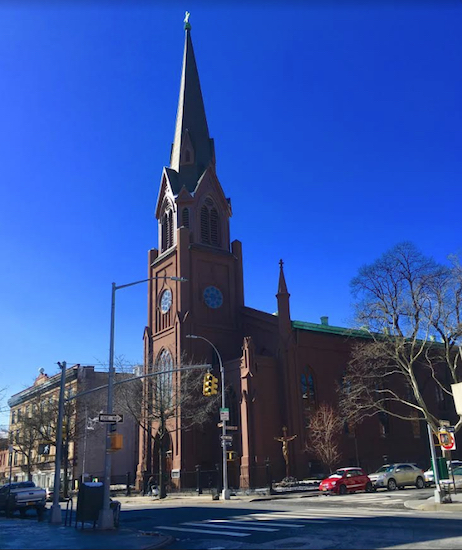Do you know the way to philanthropist Cornelius Heeney’s Cobble Hill grave?
Eye On Real Estate

This is St. Paul's Roman Catholic Church, the Cobble Hill house of worship where early 19th-century philanthropist Cornelius Heeney is buried. Eagle photos by Lore Croghan
An Irish immigrant who donated the land where St. Patrick’s Cathedral stands is buried at a church — but not the world-famous one on Fifth Avenue in Manhattan.
The mortal remains of early 19th-century philanthropist Cornelius Heeney rest in the back garden of St. Paul’s Roman Catholic Church on Court Street in Cobble Hill, Brooklyn.
We were reading about Heeney the other day in “An Architectural Guidebook to Brooklyn,” Francis Morrone’s informative work.
